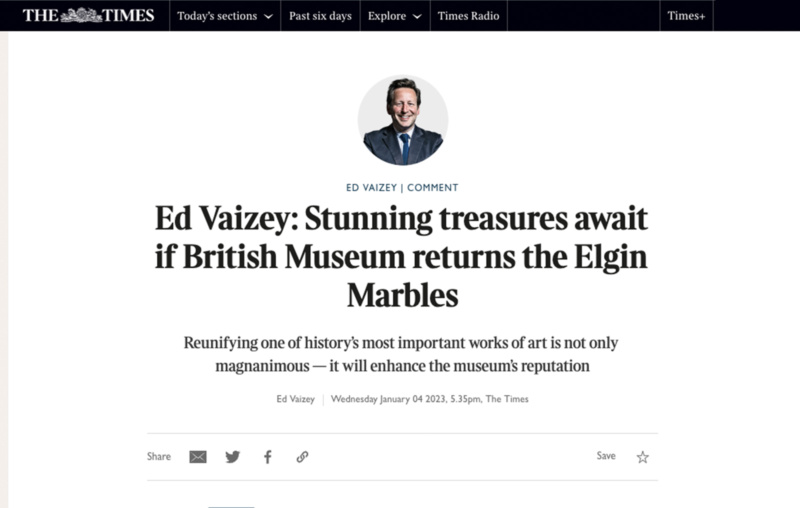The argument I often hear when I say I support a campaign to return the Parthenon sculptures to Athens is that doing so would lead to a slippery slope. If we return those treasures, where will it end? Will museums be forced to dismantle their collections and return every object from outside the UK on a wave of anticolonial righteousness?
Most Brits are already convinced that returning the sculptures, or marbles, is the right thing to do, and we now know talks are in an advanced stage on this centuries-old debate. Yet there has also naturally been a sense of nervousness from the British Museum. World-leading in its approach to showcasing artefacts spanning civilisations, the museum wants to protect its collection and that global role. However, no one wants to see the British Museum, alongside our country’s other cultural institutions, emptied. Quite the opposite.
Where is the evidence for this slippery slope argument? The V&A houses 2.7 million objects and has had only nine requests for restitution in the past 25 years. The big debates in this area — about the Parthenon sculptures, the Benin Bronzes and the Rosetta Stone — represent a tiny fragment of the artefacts homed in the UK. They just take up a lot of column inches.
No two restitution cases are alike and repatriation should certainly not be the default — but nor should retention. In the case of the sculptures, it is not about repatriating all Greek objects but rather reunifying one of the most significant works of art in history. The Parthenon, constructed to celebrate Athens, represents a central part of Greek cultural heritage. Greece is not requesting any artefacts beyond those that originally formed part of the Parthenon. They believe they are best seen and studied as a single archaeological collection and not in the current, fragmented condition.
Being magnanimous and pursuing a two-way exchange would enhance, not denude, the British Museum. Blockbuster artefacts such as the gold funereal Mask of Agamemnon, Nestor’s Cup or the Boy on the Horse could be showcased in a rejuvenated “Hellenic gallery”. The Greek government has made clear it is prepared to offer stunning artefacts for rotating exhibits so, far from a slippery slope, returning the sculptures would mean a steady stream of objects coming here.
Reunifying this precious work of art in its home should not be seen as relinquishing power or making Britain small — far from it. Returning the sculptures is the big thing to do and exemplifies Britain’s role as a global guardian of historical artefacts. It will allow the British Museum to enhance its legacy as a leading museum of the world.
How Can You Get Involved?
If you would like to join the efforts to reunite the Parthenon Sculptures in Greece through a cultural partnership and receive emails with campaign updates from Pagefield Communications, please subscribe below.
For press enquiries, please contact Pagefield Communications at parthenonproject@pagefield.co.

